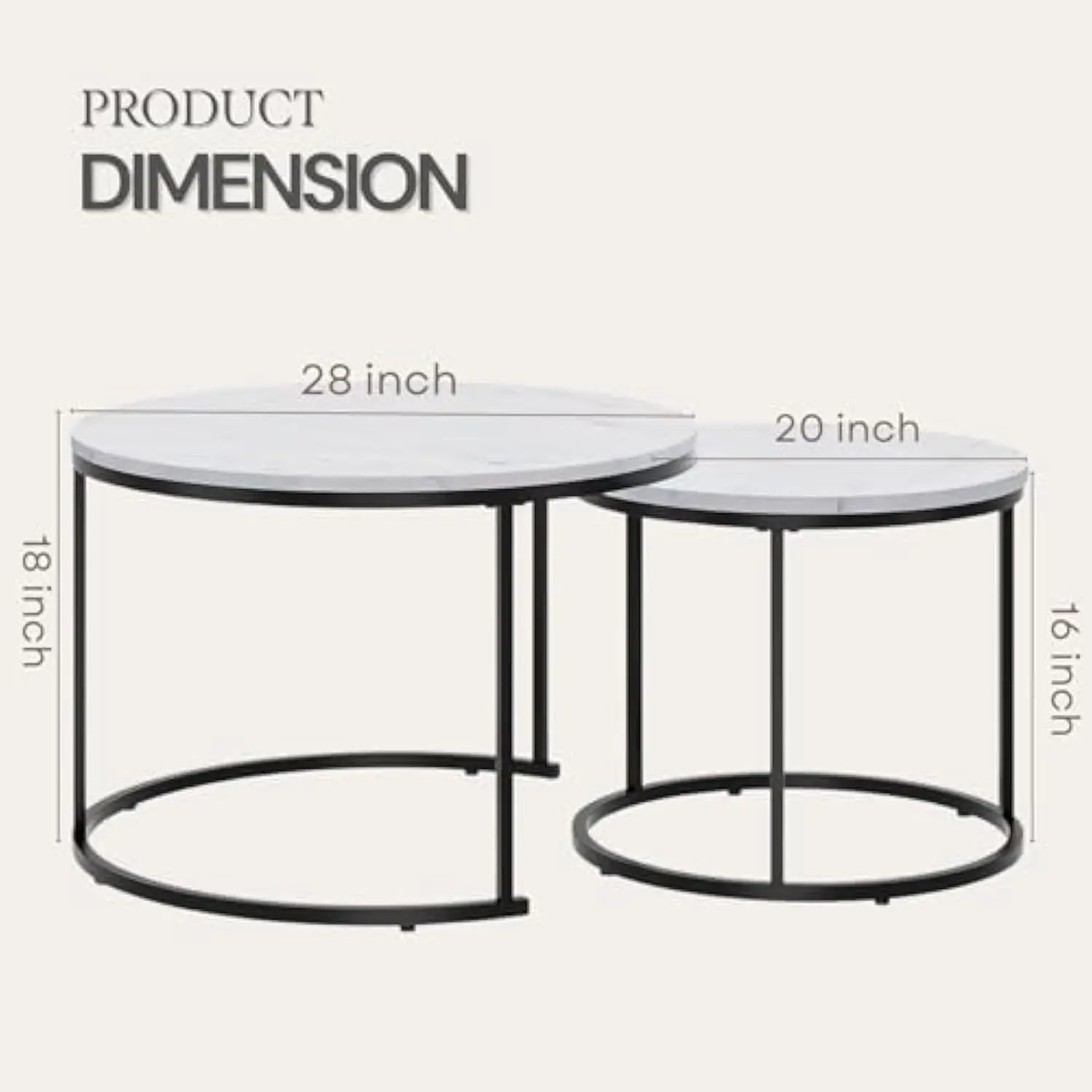Understanding Nesting Coffee Tables: Versatility and Space Efficiency in One Design
Nesting coffee tables represent one of the most clever furniture solutions for modern living. These ingenious designs consist of two or more tables of graduating sizes that can be tucked underneath each other when not in use, effectively “nesting” together to occupy the footprint of just the largest piece. When needed, they can be pulled out and arranged separately, providing multiple surfaces for different purposes throughout your living space.
Originally inspired by traditional Chinese and European designs dating back centuries, nesting tables have evolved dramatically to meet contemporary needs. What began as simple occasional tables has transformed into sophisticated centerpieces that combine form and function in perfect harmony. Today’s nesting coffee tables reflect a perfect marriage of historical influence and modern innovation.
The appeal of these versatile pieces extends far beyond their obvious space-saving benefits:
- Maximized Floor Space: When nested, these tables require minimal floor area, making them ideal for compact living arrangements
- Entertaining Flexibility: Additional table surfaces can be deployed instantly when guests arrive
- Adaptable Functionality: Tables can serve as coffee tables, side tables, snack tables, or even impromptu work surfaces
- Visual Layering: Different heights, shapes, and sometimes materials create dimensional interest even in small rooms
- Easy Mobility: Individual tables are typically lightweight enough to move around as needs change
For those living in apartments, condos, or smaller homes, space-saving benefits of nesting tables can transform how a room functions. Their ability to expand when needed and contract when not makes them particularly valuable in areas where every square foot matters.
Whether you’re furnishing a studio apartment or simply want to maximize functionality in your living room, nesting coffee tables offer an elegant solution that doesn’t compromise on style. With countless designs available in our collection of nesting coffee tables, there’s a perfect option for every space and aesthetic preference.
Finding Your Perfect Nesting Set: Size, Scale, and Placement Considerations
Selecting the right nesting coffee table set begins with understanding the spatial requirements of your room. Proper measurements and thoughtful placement ensure your tables will enhance your space rather than overwhelm it.
Start by measuring your available floor area, paying special attention to the “landing zone” in front of your sofa or seating area. The ideal coffee table height typically ranges from 16-18 inches (40-45 cm), aligning with standard sofa seat heights for comfortable use. For nesting sets, the largest table should follow this guideline, with smaller tables typically 1-3 inches (2.5-7.5 cm) shorter.
When considering placement, remember these key measurements:
- Clearance space: Allow at least 18 inches (45 cm) between your coffee table and seating for comfortable leg room and easy movement
- Proportion guideline: The length of your coffee table should ideally be about two-thirds the length of your sofa for visual balance
- Walkway width: Maintain at least 30 inches (76 cm) for pathways around the table area to ensure comfortable traffic flow
- Total footprint: Consider both the nested footprint and the extended arrangement when all tables are pulled out
For extremely small spaces like studio apartments, consider round or oval nesting tables, as their lack of sharp corners allows for smoother traffic flow. When space is truly at a premium, nesting tables offer significant advantages over traditional coffee tables by providing flexible surface options.
Weight is another important consideration, especially if you plan to move your tables frequently. Lighter materials like aluminum or certain woods make rearrangement easier, while heavier materials like stone or thick glass provide more stability but less mobility.
The beauty of nesting tables lies in their adaptability. Even in the smallest spaces, you can find appropriate small coffee table options that expand your functional surface area without permanently consuming precious floor space.
Material Selection: Finding the Perfect Balance of Form and Function
The materials used in your nesting coffee tables significantly impact their appearance, durability, weight, and maintenance requirements. Understanding the properties of different materials helps ensure your selection meets both your aesthetic preferences and practical needs.
Wood Options:
* Oak: Dense and durable with prominent grain patterns; resistant to daily wear but can show water marks
* Walnut: Rich, darker tones with beautiful grain; moderately heavy with excellent durability
* Pine: Lighter in weight and color; more prone to dents and scratches but offers rustic charm
* Bamboo: Sustainable and surprisingly strong; resistant to moisture damage with a distinctive modern look
Metal Elements:
* Steel: Extremely durable and stable; can be finished in various ways from industrial to sleek
* Brass: Adds warmth and elegance; develops a patina over time that many find desirable
* Aluminum: Lightweight and resistant to corrosion; ideal for tables that will be moved frequently
* Iron: Provides substantial weight and stability; typically features in more traditional or industrial designs
Glass and Transparent Materials:
* Tempered Glass: Stronger than regular glass and safer if broken; creates visual lightness in a space
* Acrylic: Impact-resistant alternative to glass; lightweight with excellent clarity and modern appeal
* Pros: Creates an airy feel, easy to clean, visually expands space
* Cons: Shows fingerprints, potential for scratches, requires regular cleaning
Natural Stone:
* Marble: Luxurious appearance with unique veining; porous and can stain without proper sealing
* Travertine: Natural variations in color and texture; durable but heavy and requires periodic sealing
* Pros: Substantial feel, naturally cool surface, each piece unique
* Cons: Heavy, can chip, requires special cleaning products
Engineered Materials:
* MDF with Veneer: Cost-effective with consistent appearance; quality varies widely
* Particleboard with Laminate: Budget-friendly option; less durable than solid materials
* Pros: Typically more affordable, consistent appearance, often lightweight
* Cons: Less durable over time, difficult to repair if damaged
Mixed-material combinations often create the most interesting and functional nesting tables. For example, glass-top coffee tables paired with wood or metal frames offer the visual lightness of glass with the warmth or industrial appeal of other materials. Similarly, solid wood coffee tables with metal accents combine natural warmth with contemporary styling.
When selecting materials, consider your household’s specific needs. Homes with young children might benefit from rounded corners and more forgiving surfaces, while design enthusiasts might prioritize unique materials that make a stronger visual statement.
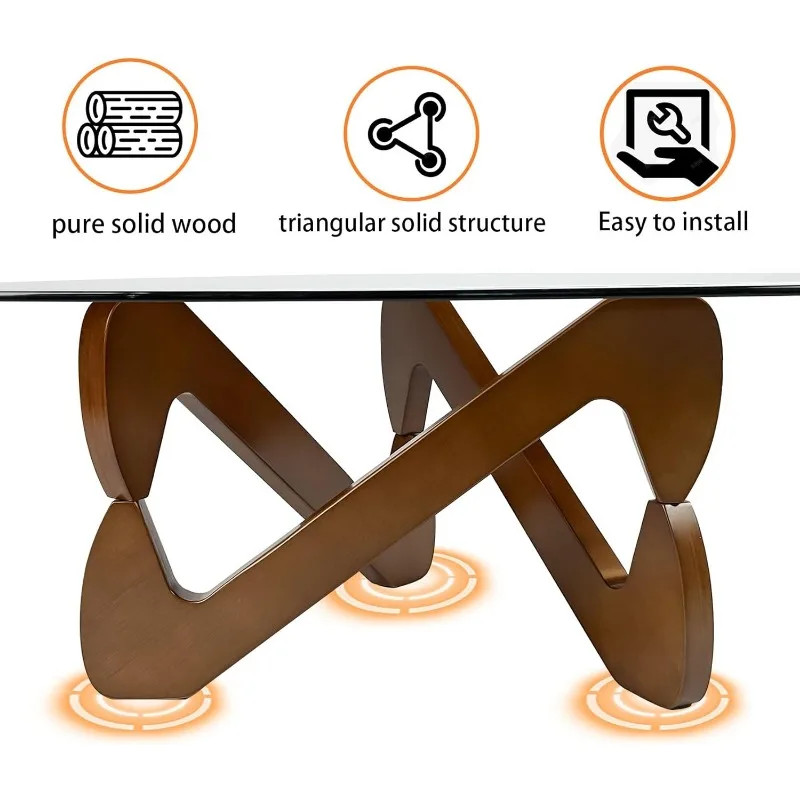
Style Selection: Matching Nesting Tables to Your Interior Design Vision
The style of your nesting coffee tables should complement your existing interior design while potentially adding visual interest through shape, form, and finish. Different shapes create distinct effects in your space, while design styles guide the overall aesthetic direction.
Table Shapes and Their Effects:
- Round and Oval Tables:
- Create natural flow and movement in a room
- Eliminate sharp corners (safer for homes with children)
- Work well in smaller spaces or rooms with multiple pathways
Soften rooms with many rectangular elements
Square and Rectangular Tables:
- Provide maximum surface area for their footprint
- Create clean, defined lines that match most traditional furniture
- Often offer more stability for items placed on them
Work well with sectional sofas and larger seating arrangements
Irregular and Organic Shapes:
- Add unique visual interest and conversation-starting appeal
- Create a custom, artistic feel in the space
- Can fit into awkward spaces where standard shapes might not work
- Often feature in contemporary and eclectic design schemes
Each interior design style suggests different nesting table characteristics that can enhance your existing décor:
Mid-Century Modern:
* Clean, organic lines with minimal ornamentation
* Tapered legs that create a sense of lightness
* Warm wood tones, particularly walnut and teak
* Emphasis on function with timeless style
Design ideas for mid-century nesting coffee tables often include organic shapes, warm wood tones, and tapered legs. Our mid-century modern coffee tables and walnut coffee tables exemplify these classic characteristics while offering contemporary functionality.
Industrial:
* Raw, unfinished materials like reclaimed wood and exposed metal
* Visible hardware and mechanical elements
* Distressed finishes that celebrate imperfection
* Often incorporates pipe-style frames or weathered surfaces
Scandinavian:
* Light woods like ash, birch, or pine
* Minimalist forms with smooth, simple lines
* Functional elegance without unnecessary elements
* Often features pale finishes and natural textures
Contemporary:
* Mixed materials that create visual contrast
* Bold, sometimes asymmetrical shapes
* Innovative designs that push traditional boundaries
* High-gloss finishes or unexpected color applications
Traditional:
* Rich wood finishes with visible grain
* Turned legs or ornate details
* Classic proportions and symmetrical designs
* Often incorporates carved elements or decorative hardware
When selecting a style, consider both current trends and timeless appeal. The most successful nesting tables will feel relevant to your space for many years, even as other design elements change around them.
Beyond Basic Function: Innovative Features for Enhanced Utility
Modern nesting coffee tables go far beyond their basic space-saving concept, incorporating clever features that maximize their functionality and convenience. These innovations transform simple tables into multi-purpose furniture that truly earns its place in your home.
Storage Solutions:
* Hidden drawers that preserve the clean lines of the table’s design
* Open shelving for displaying books and decorative items
* Concealed compartments perfect for remote controls and small items
* Lift-top surfaces that reveal storage space beneath
Adaptable Designs:
* Height-adjustable tables that transform from coffee to dining height
* Convertible pieces that change configuration for different uses
* Rotating tops that can extend or swivel for access from any angle
* Pull-out extensions that increase surface area when needed
Clever Construction Features:
* Waterfall edges that create visual flow and elegant transitions
* Cantilever designs that appear to float above the floor
* Ultra-thin profiles that maximize space efficiency
* Interlocking designs that ensure stability when nested
Material Innovations:
* Surfaces with integrated wireless charging capabilities
* Heat and stain-resistant finishes for worry-free use
* Sustainable material options with eco-friendly production methods
* Lightweight yet durable composites that offer easy mobility
Space-efficient nesting tables often incorporate these forward-thinking features while maintaining their core benefit of compact storage. For those seeking additional functionality, our lift-top coffee tables combine the space-saving benefits of nesting designs with practical storage solutions.
The best innovative designs enhance usability without complicating the clean lines and visual appeal that make nesting coffee tables so appealing. When considering these advanced features, prioritize those that align with your specific living patterns and needs rather than novelty alone.
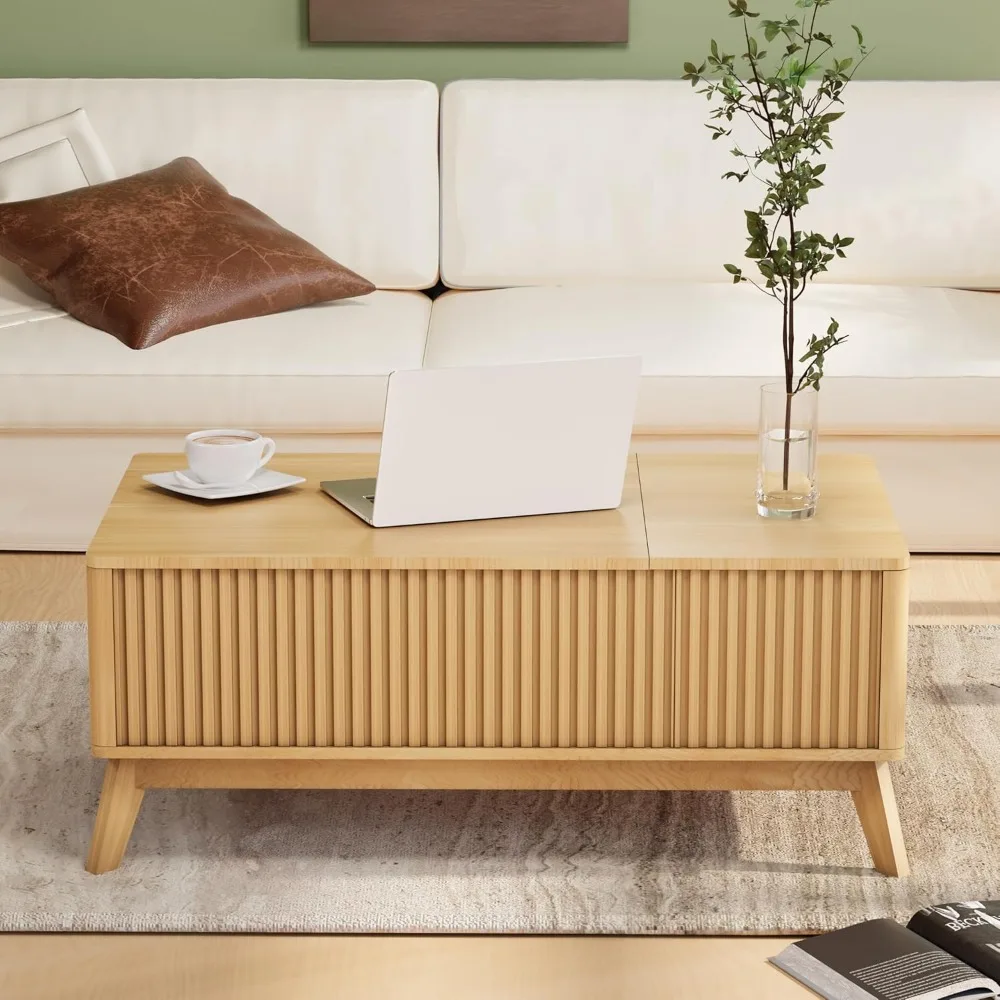
Quality Assessment: Ensuring Long-Term Value and Performance
Investing in well-crafted nesting coffee tables ensures they’ll remain functional and beautiful for years to come. Knowing how to evaluate quality before purchase helps you make confident decisions about these versatile pieces.
Quality Construction Indicators:
- Material thickness: Quality tables use appropriately thick materials for their design—too thin indicates cost-cutting, while unnecessarily thick materials add weight without benefit
- Weight capacity specifications: Better manufacturers clearly state how much weight their tables can support
- Joint construction: Look for traditional woodworking joints like dovetails or mortise and tenon in wooden pieces, and welded (not just bolted) connections in metal frames
- Surface finishing: Edges and corners should be smooth and consistent, with no rough spots
- Stability testing: Quality tables remain stable even when partially nested or when weight is unevenly distributed
Warning Signs of Poor Quality:
- Visible glue residue or excessive filler in wood joins
- Uneven gaps between components or irregular spacing
- Wobbling or movement when you apply gentle pressure
- Poor alignment when tables are nested together
- Thin veneers that can easily chip or peel
- Misaligned hardware or visible assembly issues
Warranty Considerations:
Quality manufacturers typically offer stronger warranties, reflecting confidence in their products. A comprehensive warranty covering both materials and workmanship suggests the maker stands behind their design and construction methods.
When examining nesting tables, pay particular attention to how smoothly the tables nest together. Quality sets will slide together with precision and remain stable even when fully extended. This is especially important for top designs for nesting coffee tables, where the visual appeal depends on perfect alignment.
For wooden tables, solid construction is essential for long-term durability. Understanding quality wood materials helps you distinguish between genuine quality and misleading marketing claims. Well-crafted wood pieces should have consistent grain patterns, smooth transitions, and properly finished undersides and hidden areas.
Remember that while weight often correlates with quality in traditional furniture, some contemporary designs purposely use lightweight materials for functionality. The key is appropriate weight for the design, not simply heaviness.
Investment Considerations: Budgeting for Your Nesting Table Set
When planning your purchase of nesting coffee tables, understanding the relationship between price, quality, and value helps ensure satisfaction with your investment. Different price points offer varying benefits, and knowing what to expect in each range guides your decision-making process.
Price Range Expectations:
- Budget Range ($100-300):
- Typically engineered woods with veneers or laminates
- Basic metal frames with simpler finishes
- Fewer features and simpler designs
May require self-assembly with basic hardware
Mid-Range ($300-700):
- Combination of solid woods and quality engineered materials
- More refined finishes and attention to detail
- Better hardware and joinery techniques
Often includes additional features like storage
Premium Range ($700+):
- Solid hardwoods, premium metals, natural stone
- Expert craftsmanship with traditional joinery
- Designer pedigrees or unique artistic elements
- Exceptional finishing techniques and durability
Value Determinants Beyond Price:
- Versatility: Tables that can serve multiple purposes offer greater value regardless of price point
- Adaptability: Sets that work in various room configurations provide flexibility as your needs change
- Design longevity: Classic styles tend to remain relevant longer than trend-focused designs
- Material quality: Better materials generally translate to longer usable lifetimes
When seeking the best value, consider whether you need nesting vs folding coffee tables based on your specific space constraints and usage patterns. Nesting tables typically offer more aesthetic appeal and stability, while folding options might provide greater portability.
Shopping strategically can help maximize your investment. Furniture sales typically align with new inventory arrivals (January/February and July/August), offering opportunities to purchase quality pieces at reduced prices. Floor models and open-box items can also provide significant savings on otherwise premium pieces.
For those ready to explore options across different price points, our nesting table sets offer quality craftsmanship at various investment levels to meet different budgets and design expectations.
Our Top Picks: Exceptional Nesting Coffee Tables for Every Space and Style
After extensive evaluation based on space efficiency, versatility, material quality, and design appeal, we’ve identified outstanding nesting coffee table options suited to different needs and preferences. These selections represent the best combinations of form and function across various categories.
Best Overall for Small Apartments
* Key features: Compact footprint under 30 inches (76 cm) when nested
* Materials: Mixed media with lighter-weight construction
* Design highlights: Rounded corners, medium height (16-18 inches/40-45 cm)
* Ideal use: Daily living with occasional entertaining in spaces under 700 square feet
Top Value Combinations
* Key features: Solid construction with quality materials at accessible price points
* Materials: Engineered wood with quality veneers, sturdy metal frames
* Design highlights: Classic proportions with contemporary finishes
* Ideal use: Growing households that need flexibility and durability
Design-Forward Statement Pieces
* Key features: Distinctive shapes, premium materials, artistic elements
* Materials: Solid hardwoods, architectural metals, natural stone
* Design highlights: Unexpected forms, contrasting elements, signature details
* Ideal use: Design enthusiasts seeking furniture that functions as livable art
Most Versatile Multi-Functional Sets
* Key features: Adjustable elements, mobile designs, adaptable configurations
* Materials: Lightweight yet durable components
* Design highlights: Transforming elements, wheels or glides for easy movement
* Ideal use: Multi-purpose rooms that serve different functions throughout the day
Best for Specific Interior Styles
* Mid-Century Modern: Clean lines, warm woods, tapered legs
* Industrial: Raw materials, visible hardware, weathered finishes
* Scandinavian: Light woods, minimalist forms, natural textures
* Contemporary: Mixed materials, bold shapes, innovative construction
For those drawn to the timeless appeal of mid-century design, our nesting table sets with mid-century features offer authentic styling with contemporary construction standards. If you prefer softer lines, round coffee table options create gentle visual flow while still providing the space-saving benefits of nesting designs.
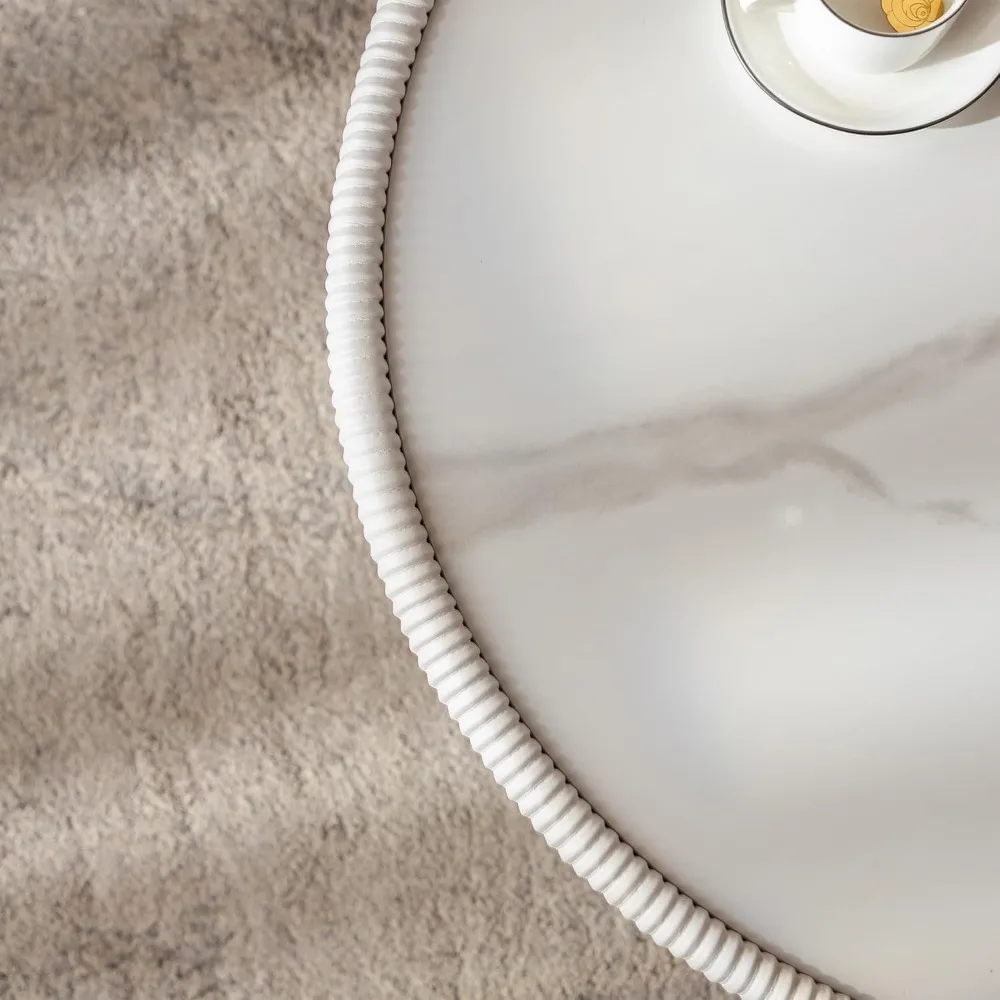
Styling and Arrangement: Maximizing the Impact of Your Nesting Tables
The versatility of nesting coffee tables extends to their styling and arrangement possibilities. How you configure and decorate these adaptable pieces can dramatically affect both their visual impact and practical functionality in your space.
Strategic Arrangement Techniques:
- Fully Nested Configuration:
- Maximizes floor space for movement
- Creates a single visual anchor in the room
- Ideal for daily use in very small spaces
Best when the design features interesting layering or visible elements of all tables
Cascading Arrangement:
- Staggers tables for visual interest while maintaining some space efficiency
- Creates a dynamic, intentional look
- Provides multiple surface heights for different functions
Works particularly well with contrasting materials or complementary shapes
Distributed Placement:
- Separates tables completely throughout the room
- Maximizes function by providing surfaces in different seating areas
- Creates cohesive design through repetition of elements
Perfect for entertaining or multi-purpose rooms
Asymmetrical Layout:
- Creates visual tension and contemporary appeal
- Uses partial nesting with intentional offsets
- Works well in artistic or eclectic spaces
- Allows for creative expression through furniture arrangement
Surface Styling Recommendations:
When decorating your nesting table surfaces, consider both size and material. Larger tables can support statement pieces like substantial books or sculptural objects, while smaller tables work better with more delicate items like small plants or candles. Glass surfaces showcase items from all angles, while wood or stone provide a solid backdrop for textural contrast.
For functional styling that maintains the tables’ usefulness, consider these approaches:
- Group similar items on decorative trays that can be easily moved when you need the surface
- Create zones for different functions—decorative objects on one table, practical items like coasters on another
- Maintain some empty space on each surface for drinks, books, or other items you’ll want to set down
- Scale decorative objects appropriately—oversized items on small tables create visual clutter
Understanding ways to use nesting coffee tables for entertaining can help you maximize their functionality during gatherings. For a cohesive look throughout your space, consider coordinated coffee and end table sets that share design elements while serving different functions.
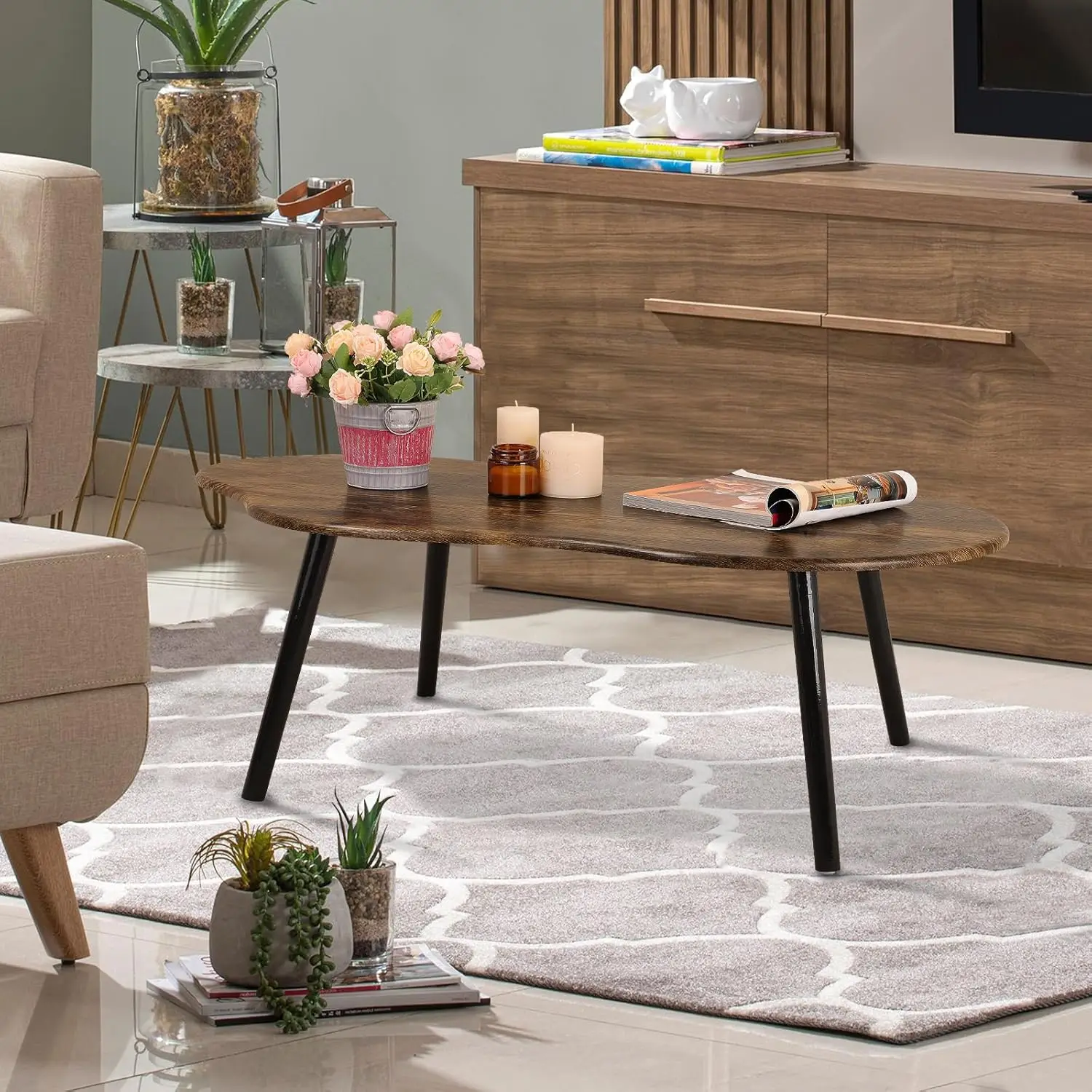
Maintenance Mastery: Caring for Your Nesting Coffee Tables
Proper care ensures your nesting coffee tables remain beautiful and functional for years. Different materials require specific maintenance approaches to preserve their appearance and structural integrity.
Wood Care:
* Dust regularly with a soft, lint-free cloth
* Clean with a slightly damp cloth and mild soap for sticky spots
* Apply appropriate wood polish or conditioner every 3-6 months
* Use coasters to prevent water rings and heat damage
* Position away from direct sunlight to prevent fading and drying
Metal Maintenance:
* Wipe clean with a soft cloth, using appropriate metal cleaner for specific finishes
* Apply thin protective wax to uncoated metals to prevent oxidation
* Use mild dish soap and water for stubborn dirt, drying thoroughly after cleaning
* Touch up small scratches with matching paint or metal polish
* Check and tighten hardware regularly, especially on tables frequently moved
Glass Care:
* Clean with ammonia-free glass cleaner or vinegar solution
* Use microfiber cloths to prevent streaking and lint residue
* Clean edges and corners carefully where dirt often accumulates
* Place protective felt under decorative items to prevent scratches
* Handle with care during cleaning to avoid impact damage
Stone Maintenance:
* Seal natural stone surfaces according to manufacturer recommendations (typically every 6-12 months)
* Clean with stone-specific products that won’t damage the finish
* Blot spills immediately to prevent staining, especially on marble and limestone
* Avoid acidic cleaners that can etch the surface
* Use trivets or coasters under all items to prevent scratches and stains
Engineered Materials:
* Follow manufacturer guidelines for specific products
* Use coasters and placemats to protect surfaces from moisture
* Clean with mild soap and water, avoiding excessive moisture
* Repair chips or scratches promptly using appropriate touch-up kits
* Avoid placing extremely hot items directly on surfaces
Preventative care is always easier than repair. Establishing simple habits like using coasters, avoiding direct sunlight, and regular gentle cleaning will maintain your tables’ appearance with minimal effort. For additional guidance on maintaining furniture in limited spaces, consider our resources on maintaining small space furniture.
Mid-Century Modern Solid Wood Coffee Tables, Mid-Century Modern Teak Coffee Tables
$879.95 Select options This product has multiple variants. The options may be chosen on the product pageMid-Century Modern Danish Coffee Tables, Mid-Century Modern Oval Coffee Tables, Mid-Century Modern Solid Wood Coffee Tables
$390.05 Select options This product has multiple variants. The options may be chosen on the product pageMid-Century Modern Nesting Side & End Tables, Mid-Century Modern Nesting Table Sets, Mid-Century Modern Round Side & End Tables
Price range: $239.35 through $273.06 Select options This product has multiple variants. The options may be chosen on the product pageMid-Century Modern Coffee & End Table Sets, Mid-Century Modern Coffee Table Sets, Mid-Century Modern Oval Coffee Tables
Price range: $257.48 through $331.04 Select options This product has multiple variants. The options may be chosen on the product pageMid-Century Modern Glass Top Coffee Tables, Mid-Century Modern Glass Top Side & End Tables
$460.58 Select options This product has multiple variants. The options may be chosen on the product pageMid-Century Modern Glass Top Coffee Tables, Mid-Century Modern Vintage Coffee Tables, Mid-Century Modern Vintage Side & End Tables
$725.36 Select options This product has multiple variants. The options may be chosen on the product page
At Hearth Forms, we believe that proper maintenance extends the life of your furniture investment while preserving its beauty and functionality for years to come.
Frequently Asked Questions: Expert Answers to Common Nesting Table Queries
Are nesting coffee tables sturdy enough for daily use?
Yes, quality nesting tables are designed for daily use. Their stability depends on construction quality and materials. Well-made nesting tables with proper joinery and quality materials can support typical coffee table activities like holding drinks, books, and decorative items. The key is selecting tables with solid construction and appropriate weight distribution.
How much floor space can I realistically save with nesting tables?
Nesting coffee tables typically save 40-60% of floor space compared to individual tables of the same total surface area. For example, a set of three nesting tables that would require 8-10 square feet if used separately might occupy only 3-4 square feet when nested. This space efficiency makes them particularly valuable in apartments and small living rooms.
Can I use nesting tables in extremely small rooms?
Absolutely. Nesting tables are ideal for very small spaces like micro-apartments and tiny homes. For extremely limited spaces, consider round or oval designs without corners, or sets with just two tables instead of three. Some compact nesting sets require as little as 24 inches (61 cm) of floor space when nested, making them suitable for even the smallest rooms.
What’s the difference between 2-piece and 3-piece nesting sets?
Two-piece sets offer simplicity and usually take up less space when nested, making them ideal for very small rooms. Three-piece sets provide more versatility and surface options, allowing for more creative arrangements and greater functionality for entertaining. The choice depends on your space constraints and how many separate surfaces you typically need.
Can nesting tables work in open plan spaces?
Yes, nesting tables excel in open plan living because they can be reconfigured to define different functional zones as needed. They can create visual boundaries between living and dining areas when separated, or be nested to open up the space for larger gatherings. Their mobility makes them particularly suited to flexible, multi-purpose rooms.
Are there height-adjustable nesting table options?
Yes, some modern nesting tables feature height-adjustable mechanisms. These hybrid designs combine the space-saving benefits of nesting tables with the functionality of adjustable-height tables. They’re particularly useful in homes where the coffee table might need to serve as an occasional dining or work surface.
What can I do if I have no space for a coffee table?
If you truly have no space for even a compact coffee table, consider alternatives to traditional coffee tables. Options include wall-mounted drop-leaf tables, ottoman coffee tables with storage, or C-tables that slide under sofas. These solutions provide surface space without requiring dedicated floor area.
Living Smart: Embracing Space-Efficiency Without Sacrificing Style
Nesting coffee tables represent the perfect intersection of thoughtful design and practical living. They embody the principle that furniture should adapt to our needs rather than forcing us to adapt to it. This flexible approach to home furnishing aligns perfectly with modern living, where spaces often need to serve multiple purposes throughout the day.
The beauty of well-designed nesting tables lies in their refusal to compromise. Unlike many space-saving solutions that sacrifice aesthetics for function, these versatile pieces enhance both the visual appeal and usability of a room. They demonstrate that compact living doesn’t mean settling for less—it means choosing more intelligently.
The most successful space-saving furniture shares these essential qualities:
- Adaptability to changing needs and situations
- Multi-functionality without complexity
- Clean design that contributes to visual spaciousness
- Quality construction that ensures longevity
When selecting nesting coffee tables for your home, consider how your specific lifestyle will interact with these pieces. Do you entertain frequently? Work from home occasionally? Have children who need play space? The answers to these questions should guide your selection toward tables that will truly enhance your daily living experience.
At Hearth Forms, we believe that every furniture piece should earn its place in your home through both beauty and purpose. Nesting coffee tables exemplify this philosophy by offering elegant solutions to common space challenges while remaining true to timeless design principles.
As living spaces continue to evolve, the intelligent versatility of nesting coffee tables ensures they’ll remain relevant and valuable additions to homes of all sizes. Their ability to expand when needed and contract when not perfectly embodies the essence of thoughtful, intentional living.
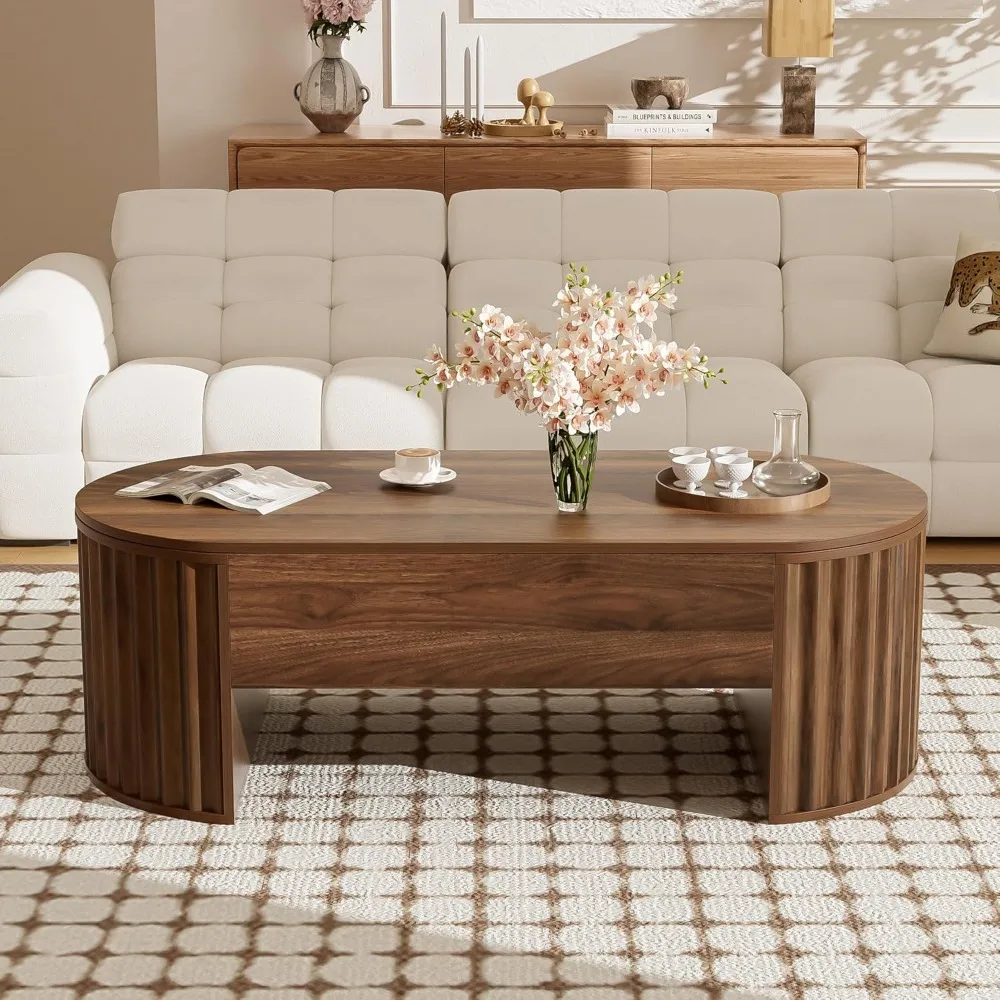
Making the Transition: From Standard Coffee Tables to Nesting Sets
Switching from a traditional coffee table to a nesting set represents a shift toward more adaptable living. This transition offers an opportunity to rethink how your space functions and appears, often with significant improvements in both areas.
Begin by evaluating your current coffee table usage patterns:
* What activities typically take place at your table?
* How often do you need additional surface space?
* What do you currently store on or in your coffee table?
* What limitations does your current setup impose?
This assessment helps identify which nesting table features will best serve your specific needs. If you’re hesitant about making a complete switch, consider these transition strategies:
- Try the concept with inexpensive nesting tables in another room first
- Temporarily relocate your current coffee table to see how nesting tables might work in the space
- Measure carefully and create paper templates to visualize different arrangements
- Start with a small two-piece set before investing in larger or more elaborate designs
Nesting tables work particularly well when coordinated with other multi-functional furniture pieces. Consider pairing them with:
- Storage ottomans that provide seating and hidden storage
- Expandable dining tables for cohesive flexibility throughout your home
- Modular seating that can be reconfigured as needed
The most common adjustment challenge when transitioning to nesting tables is developing new habits around their use. Unlike static coffee tables, nesting sets invite regular reconfiguration. Embrace this flexibility by experimenting with different arrangements for different activities. You’ll quickly discover which configurations work best for your routine and special occasions.
Small Space Success Stories: Creative Nesting Table Applications
Innovative applications of nesting coffee tables demonstrate their remarkable versatility in challenging spaces. These real-world scenarios showcase creative solutions to common small-space dilemmas.
Studio Apartment Transformation
In a 450-square-foot studio apartment, a set of three nesting tables serves as the primary surface solution. The largest table functions as the main coffee table during everyday use, while the smallest frequently serves as a bedside table. During dinner parties, all three tables separate to create individual dining surfaces beside seating throughout the room, eliminating the need for a dedicated dining table.
Family Room Flexibility
A young family with limited space uses a set of nesting tables to adapt their living area throughout the day. During playtime, the tables nest to create maximum floor space. For family movie nights, they partially separate for snacks and drinks. When adults entertain, all tables deploy to hold appetizers and beverages. This flexibility allows one room to serve multiple purposes without compromise.
Home Office Integration
A remote worker without space for a dedicated home office uses a nesting table set with varying heights as an adaptable workspace. The tallest table serves as a standing desk for short tasks, the middle as a laptop surface when working from the couch, and the smallest as a mobile surface for reference materials. All three nest together during off-hours to reclaim living space.
Entertainment Zone Expansion
A couple living in a one-bedroom apartment uses nesting tables to instantly expand their entertainment capacity. Normally nested beside the sofa, the tables separate during gatherings to create a network of surfaces throughout the living area, accommodating drinks and snacks for up to eight guests without requiring additional furniture storage.
These examples illustrate how nesting coffee tables can transform the functionality of small spaces through thoughtful application and creative thinking. Their ability to adapt to different needs makes them invaluable in homes where space must work harder to meet diverse requirements.

